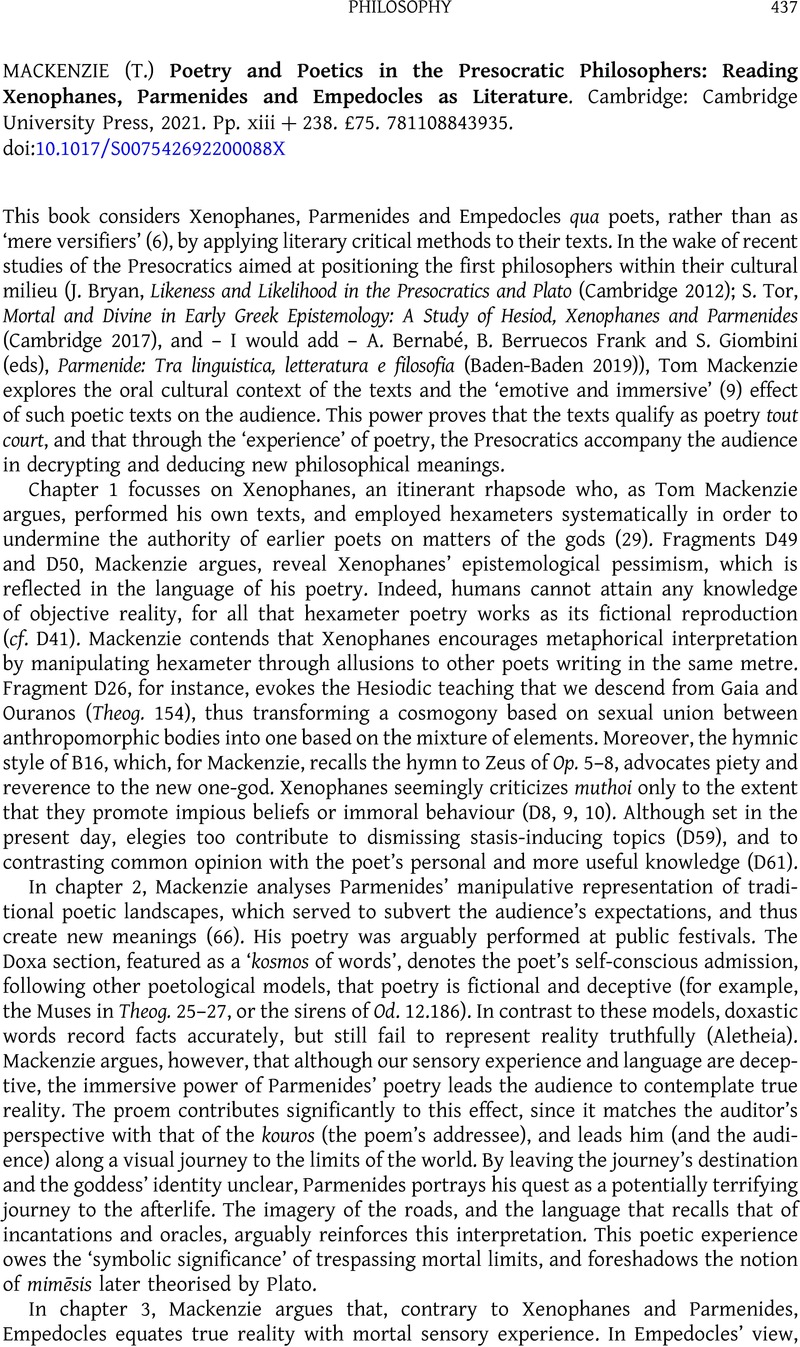No CrossRef data available.
Article contents
(T.) MACKENZIE Poetry and Poetics in the Presocratic Philosophers: Reading Xenophanes, Parmenides and Empedocles as Literature. Cambridge: Cambridge University Press, 2021. Pp. xiii + 238. £75. 781108843935.
Review products
(T.) MACKENZIE Poetry and Poetics in the Presocratic Philosophers: Reading Xenophanes, Parmenides and Empedocles as Literature. Cambridge: Cambridge University Press, 2021. Pp. xiii + 238. £75. 781108843935.
Part of:
Philosophy
Published online by Cambridge University Press: 11 April 2023
Abstract
An abstract is not available for this content so a preview has been provided. Please use the Get access link above for information on how to access this content.

- Type
- Reviews of Books: Philosophy
- Information
- Copyright
- © The Author(s), 2023. Published by Cambridge University Press on behalf of the Society for the Promotion of Hellenic Studies


